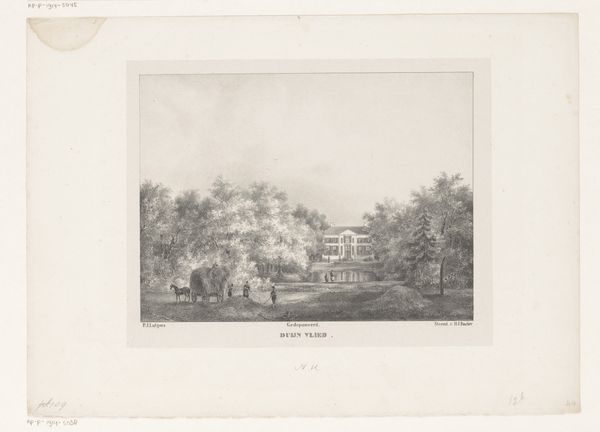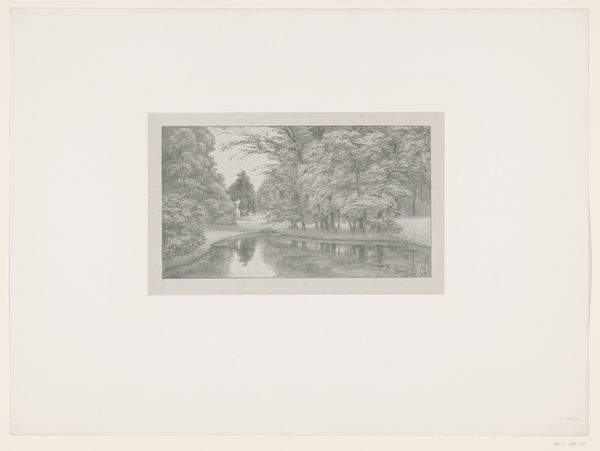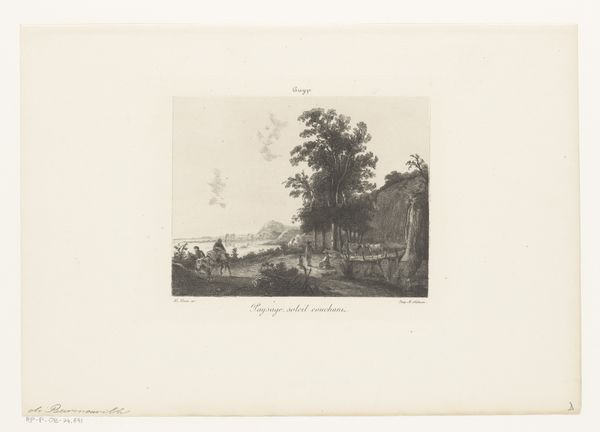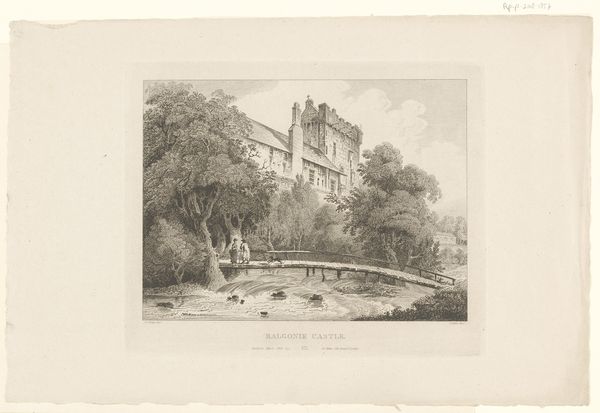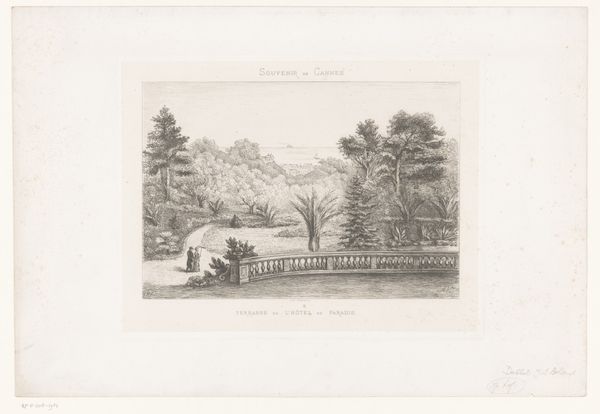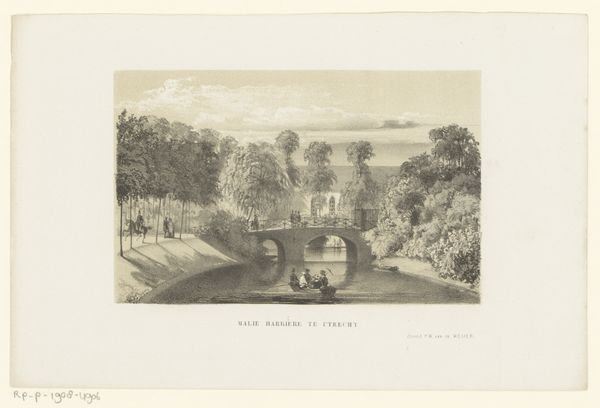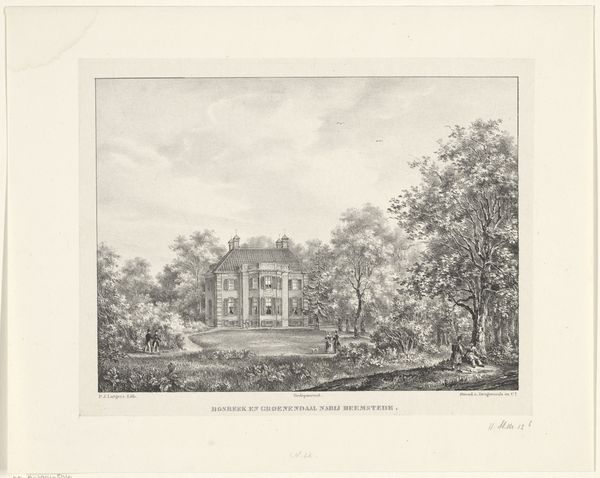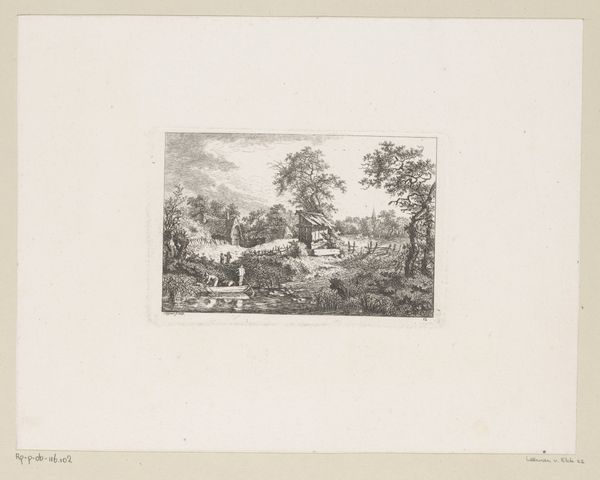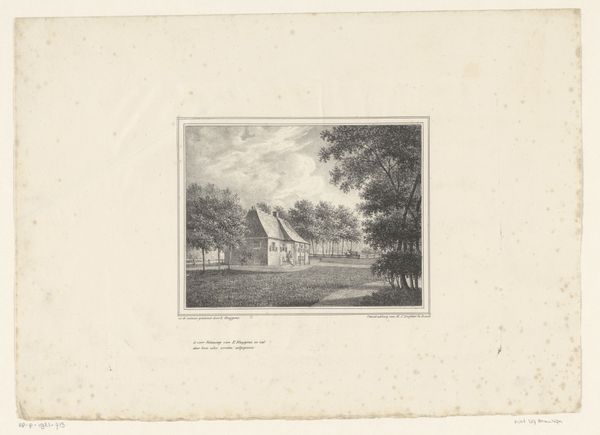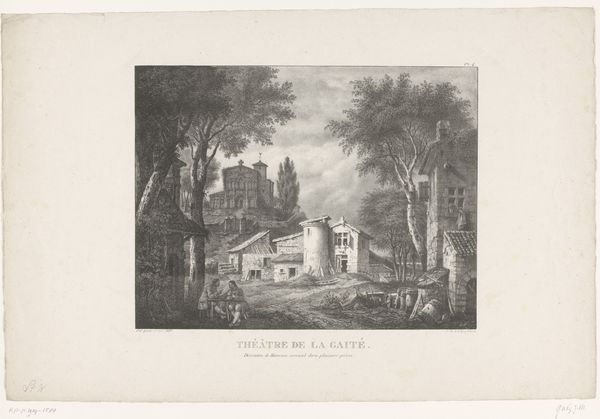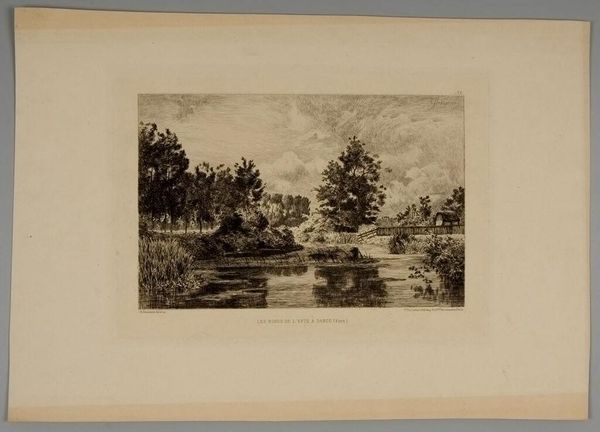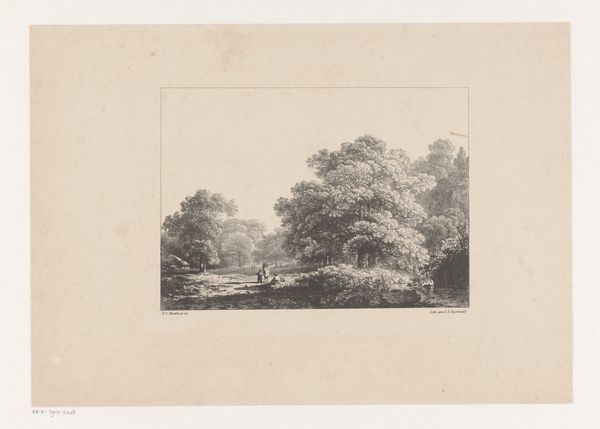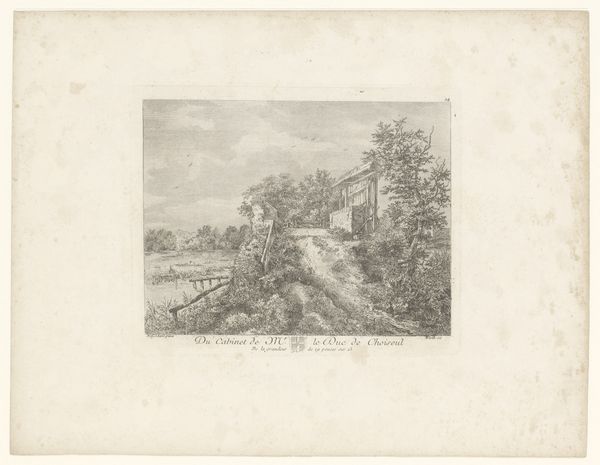
drawing, print, etching, paper
#
drawing
#
neoclacissism
# print
#
etching
#
landscape
#
paper
Dimensions: height 265 mm, width 370 mm
Copyright: Rijks Museum: Open Domain
Curator: Petrus Josephus Lutgers invites us to contemplate “Gezicht op vijver en buitenplaats Elswout”—that’s "View of the pond and Elswout estate"–created through etching and printmaking methods sometime between 1837 and 1844. Editor: Immediately, the subdued grayscale lends a wistful, almost dreamlike quality. The mirrored surface of the pond amplifies that feeling. What details stand out to you as evocative? Curator: Notice how the architecture, while present, is quite recessive; nature dominates. The landscape here doesn't simply decorate, but becomes a symbolic container of cultural memory. Consider the Dutch Golden Age landscapes—the formal country estate situated amid sprawling wilderness speaks to cultivated order, suggesting a humanist reverence. Editor: I'm curious about the actual labor involved in producing this image, turning observation into repeatable form. Etching allowed for the precise layering of line and tone, mass-producing imagery for broader consumption. Do we know what paper was employed? It seems substantial for mass distribution. Curator: The paper would have indeed been deliberately chosen—not just for its physical properties, but as a marker of quality and intended audience. Consider the symbolic weight carried by the location: Elswout Estate, with its history and associations, adds depth to our understanding of its representation. The careful orchestration of elements communicates power and prosperity. Editor: Definitely; this level of craft required immense skill—a collaboration of man and material that elevates mere document into an emblem of idealized, controlled nature. It's more than simply a beautiful image. It’s also a representation of resources and power in landscape. Curator: And that power extends beyond the merely visual. Consider the legacy, too. Its imagery has informed and shaped how the Dutch conceive of their environment for decades. These symbols persist. Editor: A fitting observation—one final aspect for reflection: that combination of practical labor meeting conceptual expression leaves a layered impression regarding the social forces, physical resources, and hands-on craftsmanship needed to achieve something simultaneously artful, lasting, and deeply encoded.
Comments
No comments
Be the first to comment and join the conversation on the ultimate creative platform.
